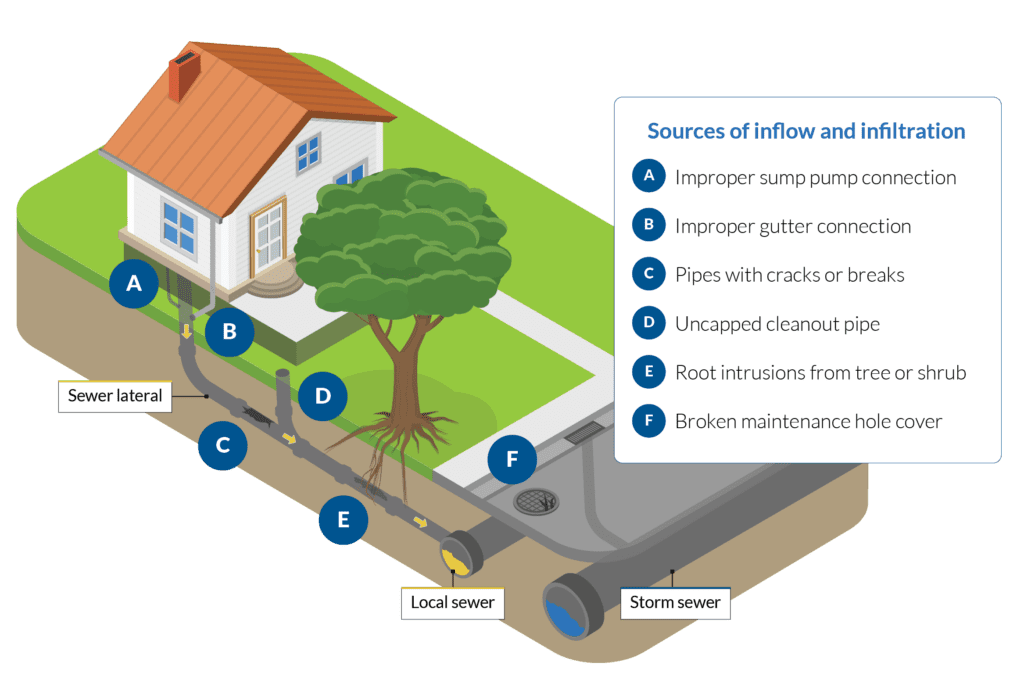
Inflow and infiltration (I&I) is clear water, such as groundwater and storm water, that enters the sanitary sewer system from sources including defective sewer laterals, sump pumps, gutters, uncapped cleanouts and aged or broken local sewer pipes and maintenance holes.
During rain events, inflow and infiltration adds significant amounts of clear water to the sanitary sewer system, which can lead to sewage overflows into basements and waterways.
Once clear water enters the sanitary sewer system it becomes wastewater and unnecessarily adds to the volume of water to be treated before it can be returned to the environment.
What you need to know
Each day, six million gallons of clear water beneath the greater Madison area leaks into the sanitary sewer system through countless cracks and holes in both public and private sewers. That adds up to three billion gallons of water per year, enough to fill Camp Randall Stadium 100 times!
And, over 50% of the greater Madison area sanitary sewer system is privately owned and maintained by home and business owners. You can help reduce the amount of clear water that enters the sanitary sewer system through simple actions on your property.
Benefits of reducing inflow and infiltration
- Improves community health and the environment by reducing sewer overflows to waterways and sensitive resources.
- Reduces the risk of sewer backups into residences and businesses.
- Allows our local economy to grow and prosper without the cost of building larger sewer pipes and facilities.
Help reduce inflow and infiltration
Keeping clear water and wastewater separate requires a collective effort. You can help keep clear water out of the sanitary sewer system by following these simple steps.
Step 1: Inspect your sewer lateral
Whether you’re purchasing a new home or business or are an existing owner, contact a plumber to have your sewer lateral pipe checked for cracks, holes or roots from trees growing into the pipe. Checking your sewer lateral pipes is the simplest and most cost-effective way to make sure you’re not contributing to inflow and infiltration.
Step 2: Check your stormwater connections
Make sure foundation drains, sump pumps, gutters and other stormwater connections are not draining into the sanitary sewer system from your home. You’ll be helping the environment and following the law.
Step 3: Repair sewer laterals
If caught early enough, fixing sewer laterals can save you both time and money. Some local communities have programs available to help with this investment into your property.
Learn more about inflow and infiltration (I&I) on our website.






